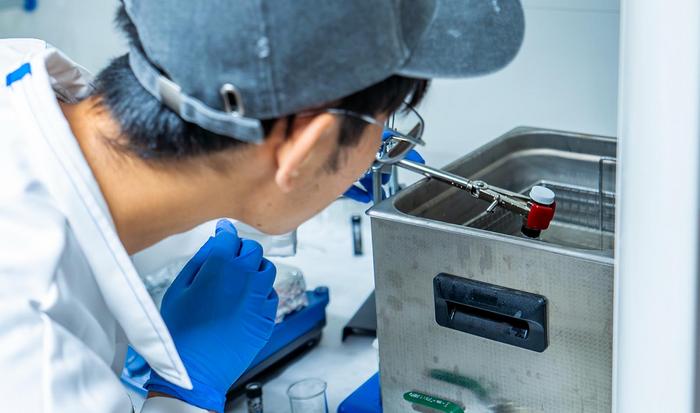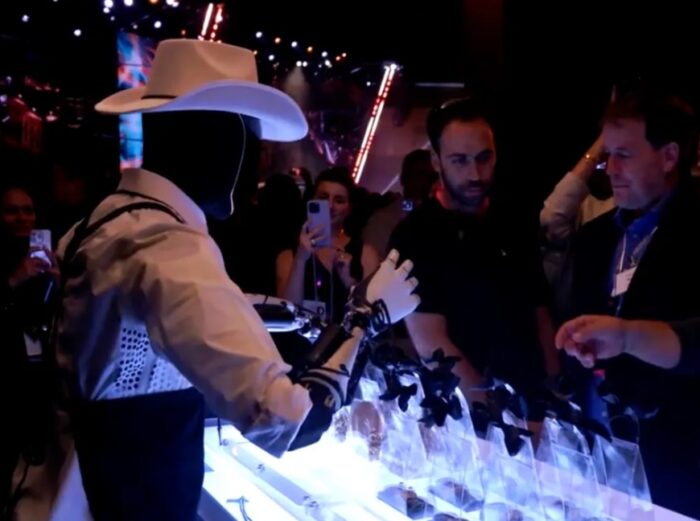NeuroLogica Blog (original) (raw)
Nov 12 2024
911 Conspiracy Theories Persist
 On September 11, 2001, as part of a planned terrorist attack, commercial planes were hijacked and flown into each of the two towers at the World Trade Center in New York. A third plane was flown into the Pentagon, and a fourth crashed after the passengers fought back. This, of course, was a huge world-affecting event. It is predictable that after such events, conspiracy theorists will come out of the woodwork and begin their anomaly hunting, breathing in the chaos that inevitably follows such events and spinning their sinister tales, largely out of their warped imagination. It is also not surprising that the theories that result, just like any pseudoscience, never truly die. They may fade to the fringe, but will not go away completely, waiting for a new generation to bamboozle. In the age of social media, everything also has a second and third life as a You Tube or Tik Tok video.
On September 11, 2001, as part of a planned terrorist attack, commercial planes were hijacked and flown into each of the two towers at the World Trade Center in New York. A third plane was flown into the Pentagon, and a fourth crashed after the passengers fought back. This, of course, was a huge world-affecting event. It is predictable that after such events, conspiracy theorists will come out of the woodwork and begin their anomaly hunting, breathing in the chaos that inevitably follows such events and spinning their sinister tales, largely out of their warped imagination. It is also not surprising that the theories that result, just like any pseudoscience, never truly die. They may fade to the fringe, but will not go away completely, waiting for a new generation to bamboozle. In the age of social media, everything also has a second and third life as a You Tube or Tik Tok video.
But still I found it interesting, after not hearing 911 conspiracy theories for years, to get an e-mail out of the blue promoting the same-old 911 conspiracy that the WTC towers fell due to planned demolition, not the impact of the commercial jets. The e-mail pointed to this recent video, by dedicated conspiracy theorist Jonathan Cole. The video has absolutely nothing new to say, but just recycles the same debunked line of argument.
The main idea is that experts and engineers cannot fully explain the sequence of events that led to the collapse of the towers and also explain exactly how the towers fell as they did. To do this Cole uses the standard conspiracy theory playbook – look for anomalies and then insert your preferred conspiracy theory into the apparent gap in knowledge that you open up. The unstated major premise of this argument is that experts should be able to explain, to an arbitrary level of detail, exactly how a complex, unique, and one-off event unfolded – and they should be able to do this from whatever evidence happens to be available.
Nov 08 2024
The Social Media Dilemma
 Australia is planning a total ban on social media for children under 16 years old. Prime Minister Anthony Albanese argues that it is the only way to protect vulnerable children from the demonstrable harm that social media can do. This has sparked another round of debates about what to do, if anything, about social media.
Australia is planning a total ban on social media for children under 16 years old. Prime Minister Anthony Albanese argues that it is the only way to protect vulnerable children from the demonstrable harm that social media can do. This has sparked another round of debates about what to do, if anything, about social media.
When social media first appeared, there wasn’t much discussion or recognition about the potential downsides. Many viewed it as one way to fulfill the promise of the web – to connect people digitally. It was also viewed as the democratization of mass communication. Now anyone could start a blog, for example, and participate in public discourse without having to go through editors and gatekeepers or invest a lot of capital. And all of this was true. Here I am, two decades later, using my personal blog to do just that.
But the downsides also quickly became apparent. Bypassing gatekeepers also means that the primary mechanism for quality control (for what it was worth) was also gone. There are no journalistic standards on social media, no editorial policy, and no one can get fired for lying, spreading misinformation, or making stuff up. While legacy media still exists, social media caused a realignment in how most people access information.
In the social media world we have inadvertently created, the people with the most power are arguably the tech giants. This has consolidated a lot of power in the hands of a few billionaires with little oversight or regulations. Their primary tool for controlling the flow of information is computer algorithms, which are designed to maximize engagement. You need to get people to click and to stay on your website so that you can feed them ads. This also created a new paradigm in which the user (that’s you) is the product – apps and websites are used to gather information about users which are then sold to other corporations, largely for marketing purposes. In some cases, like the X platform, and individual can favor their own content and perspective, essentially turning a platform into a propaganda machine. Sometimes an authoritarian government controls the platform, and can push public discourse in whatever direction they want.
Nov 05 2024
A Discussion about Biological Sex
 At CSICON this year I gave talk about topics over which skeptics have and continue to disagree with each other. My core theme was that these are the topics we absolutely should be discussing with each other, especially at skeptical conferences. Nothing should be taboo or too controversial. We are an intellectual community dedicated to science and reason, and have spent decades talking about how to find common ground and resolve differences, when it comes to empirical claims about reality. But the fact is we sometimes disagree, and this is a great learning opportunity. It’s also humbling, reminding ourselves that the journey toward critical thinking and reason never ends. On several topics self-identified skeptics disagree largely along political grounds, which is a pretty sure sign we are not immune to ideology and partisanship.
At CSICON this year I gave talk about topics over which skeptics have and continue to disagree with each other. My core theme was that these are the topics we absolutely should be discussing with each other, especially at skeptical conferences. Nothing should be taboo or too controversial. We are an intellectual community dedicated to science and reason, and have spent decades talking about how to find common ground and resolve differences, when it comes to empirical claims about reality. But the fact is we sometimes disagree, and this is a great learning opportunity. It’s also humbling, reminding ourselves that the journey toward critical thinking and reason never ends. On several topics self-identified skeptics disagree largely along political grounds, which is a pretty sure sign we are not immune to ideology and partisanship.
I spent most of the talk, however, discussing the issue of biological sex in humans, which I perceive as the currently most controversial topic within skepticism. My goal was to explore where it is we actually disagree. Generally speaking skeptics don’t disagree about the facts or about the proper role of science in determining what is likely to be true. We tend to disagree for more subtle reasons, although often the reason does come down to a lack of specific topic expertise on questions that are highly technical. The most important thing is that we actually engage with each-other’s arguments and positions, to make sure we truly understand what those who disagree with us are saying so that we can properly explore premises and logic.
Jerry Coyne, author of the book and blog Why Evolution is True, was also at CSICON and gave a talk essentially taking the opposing position to my own. His position is that biological sex in humans is binary, that this is the only scientific position, and anything else is simply ideology trumping science. His talk was after mine so I was very interested in how he would respond to my position. He essentially didn’t – he just gave the talk he was going to give and then included a single slide with his “responses” to my talk. Except, they weren’t responses at all, just a list of standard talking points that really had nothing to do with my talk.
Nov 04 2024
AC vs DC and other Power Questions
 I was away last week, first at CSICON and then at a conference in Dubai. I was invited to give a 9 hour seminar on scientific skepticism for the Dubai Future Foundation. That sounds like a lot of time, but it isn’t. It was a good reminder of the vast body of knowledge that is relevant to skepticism, from neuroscience to psychology and philosophy. Just the study of pseudoscience and conspiracy thinking themselves could have filled the time. It was my first time visiting the Middle East and I always find it fascinating to see the differences and similarities between cultures.
I was away last week, first at CSICON and then at a conference in Dubai. I was invited to give a 9 hour seminar on scientific skepticism for the Dubai Future Foundation. That sounds like a lot of time, but it isn’t. It was a good reminder of the vast body of knowledge that is relevant to skepticism, from neuroscience to psychology and philosophy. Just the study of pseudoscience and conspiracy thinking themselves could have filled the time. It was my first time visiting the Middle East and I always find it fascinating to see the differences and similarities between cultures.
What does all this have to do with alternating vs direct current? Nothing, really, except that I found myself in a conversation about the topic with someone deeply involved in the power industry in the UAE. My class was an eclectic and international group of business people – all very smart and accomplished, but also mostly entirely new to the concept of scientific skepticism and without a formal science background. It was a great opportunity to gauge my American perspective against an international group.
I was struck, among other things, by how similar it was. I could have been talking to a similar crowd in the US. Sure, there was a layer of Arabic and Muslim culture on top, but otherwise the thinking and attitudes felt very familiar. Likely this is a result of the fact that Dubai is a wealthy international city. It is a good reminder that the urban-rural divide may be the most deterministic one in the world, and if you get urban and wealthy enough you tend to align with global culture.
Back to my conversation with the power industry exec – the power mix in the UAE is not very different from the US. They have about 20% nuclear (same as the US), 8% solar, and the rest fossil fuel, mostly natural gas. They have almost no wind and no hydropower. Their strategy to shift to low carbon power is all in on solar. They are rapidly increasing their power demand, and solar is the cheapest new energy. I don’t think their plan for the future is aggressive enough, but they are moving in the right direction.
Oct 22 2024
Electronic Noses
 I am always sniffing around (pun intended) for new and interesting technology, especially anything that I think is currently flying under the radar of public awareness but has the potential to transform our world in some way. I think electronic nose technology fits into this category.
I am always sniffing around (pun intended) for new and interesting technology, especially anything that I think is currently flying under the radar of public awareness but has the potential to transform our world in some way. I think electronic nose technology fits into this category.
The idea is to use electronic sensors that can detect chemicals, specifically those that are abundant in the air, such as volatile organic compounds (VOCs). Such technology has many potential uses, which I will get to below. The current state of the art is advancing quickly with the introduction of various nanomaterials, but at present these sensing arrays require multiple antenna coated with different materials. As a result they are difficult and expensive to manufacture and energy intensive to operate. They work, and often are able to detect specific VOCs with 95% or greater accuracy. But their utility is limited by cost and inconvenience.
A new advance, however, is able to reproduce and even improve upon current performance with a single antenna and single coating. The technology uses a single graphene oxide coated antenna which then uses ultrawide microwave band signals to detect specific VOCs. These molecules will reflect different wavelengths differently depending on their chemical structure. That is how they “sniff” the air. The results are impressive.
Oct 21 2024
Tesla Demonstrated its Optimus Robot
 At a recent event Tesla showcased the capabilities of its humanoid autonomous robot, Optimus. The demonstration has come under some criticism, however, for not being fully transparent about the nature of the demonstration. We interviewed robotics expert, Christian Hubicki, on the SGU this week to discuss the details. Here are some of the points I found most interesting.
At a recent event Tesla showcased the capabilities of its humanoid autonomous robot, Optimus. The demonstration has come under some criticism, however, for not being fully transparent about the nature of the demonstration. We interviewed robotics expert, Christian Hubicki, on the SGU this week to discuss the details. Here are some of the points I found most interesting.
First, let’s deal with the controversy – to what extent were the robots autonomous, and how transparent was this to the crowd? The first question is easier to answer. There are basically three types of robot control, pre-programmed, autonomous, and teleoperated. Pre-programmed means they are following a predetermined set of instructions. Often if you see a robot dancing, for example, that is a pre-programmed routine. Autonomous means the robot has internal real-time control. Teleoperated means that a human in a motion-capture suit is controlling the movement of the robots. All three of these types of control have their utility.
These are humanoid robots, and they were able to walk on their own. Robot walking has to be autonomous or pre-programmed, it cannot be teleoperated. This is because balance requires real-time feedback of position and other information to produces the moment-to-moment adjustments that maintain balance. A tele-operator would not have this (at least not with current technology). The Optimus robots walked out, so this was autonomous.
Oct 17 2024
The Clipper Europa Mission
 I wrote earlier this week about the latest successful test of Starship and the capture of the Super Heavy booster by grabbing arms of the landing tower. This was quite a feat, but it should not eclipse what was perhaps even bigger space news this week – the launch of NASAs Clipper probe to Europa. If all goes well the probe will enter orbit around Jupiter in 2030.
I wrote earlier this week about the latest successful test of Starship and the capture of the Super Heavy booster by grabbing arms of the landing tower. This was quite a feat, but it should not eclipse what was perhaps even bigger space news this week – the launch of NASAs Clipper probe to Europa. If all goes well the probe will enter orbit around Jupiter in 2030.
Europa is one of the four large moons of Jupiter. It’s an icy world but one with a subsurface ocean – an ocean that likely contains twice as much water as the oceans of Earth combined. Europa is also one of the most likely locations in our solar system for life outside Earth. It is possible that conditions in that ocean are habitable to some form of life. Europa, for example, has a rocky core, which may still be molten, heating Europa from the inside and seeding its ocean with minerals. Chemosynthetic organisms survive around volcanic vents on Earth, so we know that life can exist without photosynthesis and Europa might have the right conditions for this.
But there is still a lot we don’t know about Europa. Previous probes to Jupiter have gathered some information, but Clipper will be the first dedicated Europa probe. It will make 49 close flybys over a 4 year primary mission, during which it will survey its magnetic field, gravity, and chemical composition. Perhaps most exciting is that Clipper is equipped with instruments that can sample any material around Europa. The hope is that Clipper will be able to fly through a plume of material shooting up geyser-like from the surface. It would then be able to detect the chemical composition of Europa material, especially looking for organic compounds.
Oct 14 2024
Latest Starship Launch
 SpaceX has conducted their most successful test launch of a Starship system to date. The system they tested has three basic components – the Super Heavy first stage rocket booster, the Starship second stage (which is the actual space ship that will go places), and the “chopsticks”, which is a mechanical tower designed to catch the Super Heavy as it returns. All three components apparently functioned as hoped.
SpaceX has conducted their most successful test launch of a Starship system to date. The system they tested has three basic components – the Super Heavy first stage rocket booster, the Starship second stage (which is the actual space ship that will go places), and the “chopsticks”, which is a mechanical tower designed to catch the Super Heavy as it returns. All three components apparently functioned as hoped.
The Super Heavy lifted Starship into space (suborbital), then returned to the launch pad in Southern Texas where it maneuvered into the grasping mechanical arms of the chopsticks. The tower’s arms closed around the Super Heavy, successfully grabbing it. The engines then turned off and the rocket remained held in place. The idea here is to replicate the reusable function of the Falcon rockets, which can return to a landing pad after lifting their cargo into orbit. The Falcons land on a platform one the water. SpaceX, however, envisions many Starship launches and wants to be able to return the rockets directly to the launch pad, for quicker turnaround.
The Starship, for its part, also performed as expected. It came back down over the designated target in the Indian Ocean. Once it got to the surface it rolled on its side and exploded. They were never planning on recovering any of the Starship so this was an acceptable outcome. Of course, eventually they will need to land Starship safely on the ground.
The system that SpaceX came up with reflects some of the realities and challenges of space travel. The Earth is a massive gravity well, and it is difficult to get out of and back into that gravity well. Getting into orbit requires massive rockets with lots of fuel, and falls prey to the rocket equation – you need fuel to carry the fuel, etc. This is also why, if we want to use Starship to go to Mars, SpaceX will have to develop a system to refuel in orbit.
Oct 11 2024
Spider-Man’s Web Shooter
 I have to admit that my favorite superhero as a kid, and still today, is Spider-Man (and yes, that’s the correct spelling). There are a number of narrative reasons for this that I grew to appreciate more as I aged. First, Spider-Man is in the sweet spot of super abilities – he is strong, fast, agile, and has “spidey senses”. But he is not boringly invulnerable like Superman. He doesn’t brute force his way to solving situations. You don’t have to retcon questions like – if Ironman has the technology to produce immense energy, why doesn’t he just make it available to the world? He would save more lives that way.
I have to admit that my favorite superhero as a kid, and still today, is Spider-Man (and yes, that’s the correct spelling). There are a number of narrative reasons for this that I grew to appreciate more as I aged. First, Spider-Man is in the sweet spot of super abilities – he is strong, fast, agile, and has “spidey senses”. But he is not boringly invulnerable like Superman. He doesn’t brute force his way to solving situations. You don’t have to retcon questions like – if Ironman has the technology to produce immense energy, why doesn’t he just make it available to the world? He would save more lives that way.
But of course the coolest aspect of Spider-Man is his webslinging. This allows him to fly through the city, and to tie-up villains for the police to collect. This is also one aspect of the Spider-Man story that I thought was a bit contrived (even for the superhero genre where being bitten by a radioactive spider gives you super powers). In science fiction you generally get one gimmie – the author is allowed to make up just one fantastical fact to use as a cornerstone of their story. But they should not introduce multiple such gimmies. It breaks the unwritten contract between author and reader.
With Spider-Man, the one gimmie is the whole radioactive spider thing. That’s the one thing we are being asked to just accept and not question. I do like how more modern versions of the story changed that to genetic engineering – still fantastical, but way more plausible than radioactivity. I also liked that in the Tobey Maguire Spider-Man his webbing was part of the genetic engineering, and he produced the spider silk himself and extruded it from spinners in his wrists. For other versions we are asked to accept a double-gimmie – first, the whole spider thing, and second that Peter Parker also happens to be such a genius that he invented practically overnight something that scientists have been unable to do in decades, mimic the spider silk-spinning of spiders. Spider-Man was created in 1962, and here we are more than 60 years later and this remains an intractable problem of material science.
Or is it?
Oct 10 2024
Confidently Wrong
 How certain are you of anything that you believe? Do you even think about your confidence level, and do you have a process for determining what your confidence level should be or do you just follow your gut feelings?
How certain are you of anything that you believe? Do you even think about your confidence level, and do you have a process for determining what your confidence level should be or do you just follow your gut feelings?
Thinking about confidence is a form of metacognition – thinking about thinking. It is something, in my opinion, that we should all do more of, and it is a cornerstone of scientific skepticism (and all good science and philosophy). As I like to say, our brains are powerful tools, and they are our most important and all-purpose tool for understanding the universe. So it’s extremely useful to understand how that tool works, including all its strengths, weaknesses, and flaws.
A recent study focuses in on one tiny slice of metacognition, but an important one – how we form confidence in our assessment of a situation or a question. More specifically, it highlights The illusion of information adequacy. This is yet another form of cognitive bias. The experiment divided subjects into three groups – one group was given one half of the information about a specific situation (the information that favored one side), while a second group was given the other half. The control group was given all the information. They were then asked to evaluate the situation and how confident they were in their conclusions. They were also asked if they thought other people would come to the same conclusion.
You can probably see this coming – the subjects in the test groups receiving only half the information felt that they had all the necessary information to make a judgement and were highly confident in their assessment. They also felt that other people would come to the same conclusion as they did. And of course, the two test groups came to the conclusion favored by the information they were given.